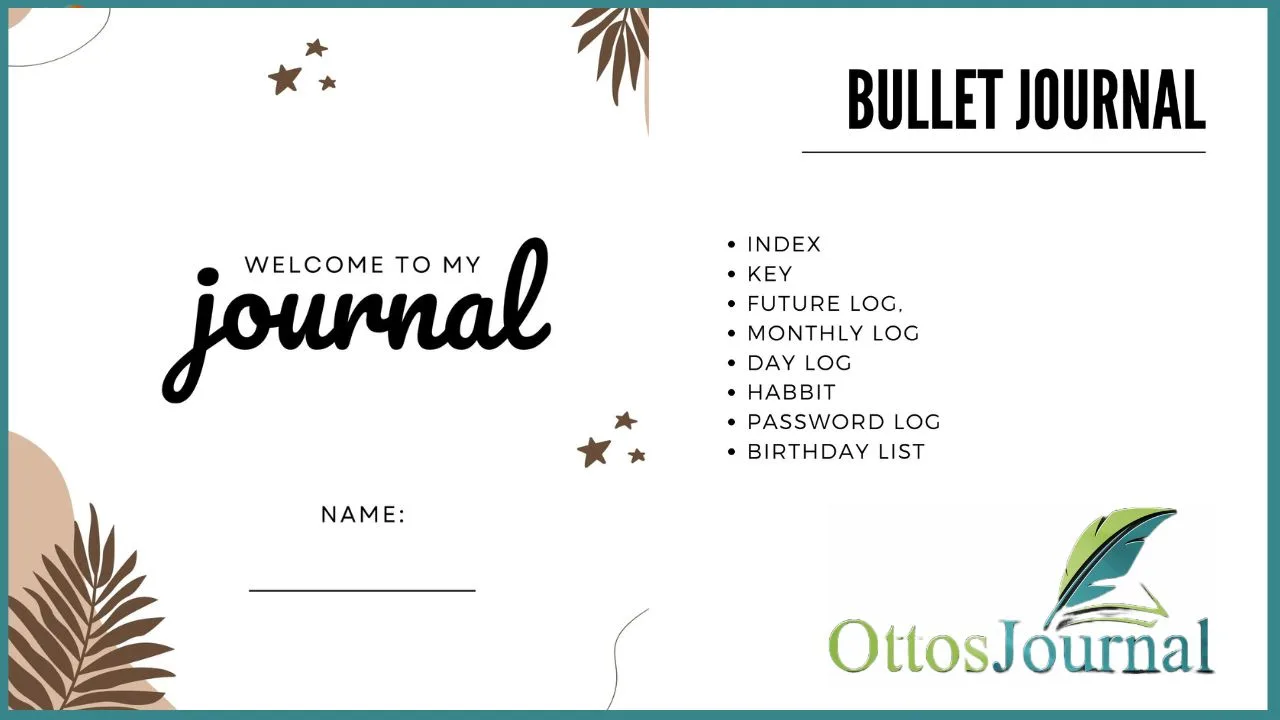Journaling and bullet journaling are two popular methods of self-expression, reflection, and goal setting. While both involve recording thoughts, feelings, ideas, and plans on paper or a digital device, there are some key differences between the two. So, what is the difference between journaling and bullet journaling? In this article, we’ll explore what sets each type of journaling apart and discuss which one might be best for your needs.
What is the difference between journaling and bullet journaling?
Format
Traditional journaling involves writing about your thoughts, feelings, and experiences with no specific structure or format.
Bullet journaling is a more organized approach to note-taking and planning that requires the use of bullet points, symbols, abbreviations, and lists to quickly capture ideas on paper.
Flexibility
With journaling, you can write whatever you want and as much or little as you want. Bullet journaling requires more discipline when it comes to following the structure of the system.
Use Cases
Traditional journaling is often used for reflection, recording memories, and tracking progress. Bullet journaling is used mainly for quick note-taking, task management, and goal setting.
Creativity
Traditional journaling allows for a lot of creative freedom and self-expression. Bullet journaling encourages creativity too but within the structure of the system.
Frequency
You can journal as often or as infrequently as you like; there’s no pressure to keep up with your journaling. Bullet journaling requires more commitment and frequent updates to stay organized.
Digital or Paper
Traditional journaling can be done on paper or digitally, while bullet journaling is usually done with a physical blank notebook or planner.
Structure
Traditional journaling has no specific structure; you can write about anything and everything. Bullet journaling has a specific structure that requires the use of symbols, abbreviations, and to-do lists to quickly capture ideas on paper.
Pace
Traditional journaling can be done at any pace; you can take as long or as little time as you want. With bullet journaling, there is more pressure to keep up with the system and update it regularly.
Length
Traditional journaling can range from a few sentences to several lined pages, while bullet journaling is typically limited to short notes and lists.
Outcome
With traditional journaling, the outcome is usually personal reflection or insights into your thoughts and experiences. With bullet journals, the outcome may be task management, goal setting, and a better overview of your life.
Types of journal
1. Gratitude Journal
A gratitude journal is a type of gratitude log reflective journal in which you write down things that you are thankful for.
2. Dream Journal
A dream journal helps you document and analyze your dreams upon waking up. It can help deepen your understanding of yourself as well as provide insights into how you might want to make changes in your daily life.
3. Art Journal
An art journal is a type of creative journal in which you can express yourself visually through drawing, painting, and other forms of art.
4. Fitness Journal
A fitness journal is a type of reflective journal that helps you track your workouts, fitness journey toward goals, diet and nutrition habits, and other information related to your physical health.
5. Travel Journal
A travel journal is a type of reflective journal that helps you document your experiences and memories from trips abroad.
6. Food Journal
A food journal is a type of reflective journal that helps you in keeping track of what you eat, how much you eat, and how it makes you feel to gain insight into your eating habits.
7. Life Story Journal
A life story journal is a type of reflective journal that helps you document your journey through life, from childhood to adulthood.
8. Academic Journal
An academic journal is a type of reflective journal used by students to help them keep track of their assignments, class notes, and progress toward educational goals.
9. Prayer/Meditation Journal
A prayer/meditation journal is a type of reflective journal used to document your spiritual journey, thoughts, and moments of gratitude.
Types of bullet journal
1. Habit Tracker
A habit tracker is a type of bullet journal system used to keep track of daily log habits or activities, such as mood tracker and meal tracking.
2. Goal Tracker
A goal tracker is a type of bullet journal system used to document progress toward goals and keep track of when they are achieved.
3. Calendar System
A calendar system is a type of bullet journaling tool used to schedule and plan out tasks, events, or goals.
4. Spreadsheets
Spreadsheets are a type of bullet journaling method used to organize data in an easy-to-read format and journal entries.
5. Task Lists
Task lists are a type of bullet journaling system used to keep track of upcoming tasks in the form of a to-do list and prioritize them accordingly.
6. Note-Taking System
A note-taking system is a type of bullet journaling tool used to quickly jot down ideas and important information.
7. Project Tracker
A project tracker is a type of bullet journaling system used to keep track of progress on projects or goals over time.
8. Collection System
A collection system is a type of bullet journaling tool used to organize ideas, resources, and information into logical categories.
9. Sketchbook
A sketchbook is a type of bullet journaling system used to quickly capture visual ideas on themed pages.
Which is better? Journal or bullet journal?
The answer to this question depends entirely on your own needs and preferences. Both traditional journaling and bullet journaling can help track progress, set goals, express yourself creatively, and reflect on experiences.
Ultimately, the best type of journal for you will depend on what you hope to get out of it. If structure is important to you or if you’re looking for a way to stay organized, bullet journaling may be the better option.
If you simply want an outlet for expressing your thoughts and feelings without any limitations or rules, traditional journaling may be the better choice.
No matter which type of journaling you choose, it’s important to remember that there is no right or wrong way to do it, just find what works best for you.
Bottom Line
Journaling and bullet journaling are both great tools for organizing thoughts, setting goals, tracking progress, and expressing your creativity.
Depending on what you hope to get out of it, one type may be more suitable than the other. No matter which one you choose, find a system that works for you and stick with it.
With consistent use, journaling can help you make sense of life’s journey and make progress toward your goals.





